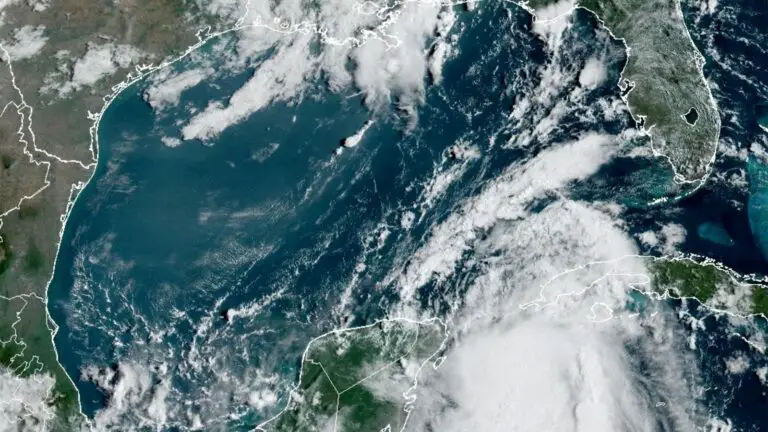Idalia Upgraded to Hurricane, Puts Florida on Alert
Hurricane Idalia, previously a tropical storm, has been upgraded and is set to hit Florida early Wednesday, posing a threat to the lives of 14 million people in the region. While hurricanes during the June to November season are not uncommon, Idalia’s rapid intensification due to elevated sea temperatures is making it harder to prepare for and potentially more deadly.
Forecasted Path and Impact
Idalia is projected to make landfall as a Category 3 hurricane along Florida’s northwest coast around 6am (local time) on Wednesday. This will bring heavy rain, with 10 to 20cm (3 to 8in) expected, and winds exceeding 110mph (177kmph). The hurricane will then progress eastwards across northern Florida, near Jacksonville, before reaching the Georgia border later in the day. Its trajectory continues along the Gulf of Mexico coastline, affecting Georgia, South Carolina, and North Carolina on Wednesday and Thursday.
Impending Dangers and Precautions
Authorities have issued storm surge warnings for Tampa Bay and the ‘Big Bend’ region of Florida, expecting floodwater levels of 8ft (2.4m) to 12ft (3.7m) between the Chassahowitzka and Aucilla rivers. A separate hurricane warning applies to Florida’s Gulf Coast, carrying the risk of heavy rainfall and urban flash flooding. The primary threat lies in surging seawater propelled inland by strong winds.
Impacts in Cuba and Initial Response
Idalia has already caused disruption in Cuba, with its northern tip experiencing heavy rain and wind. Coastal regions were evacuated as floodwaters rose, particularly affecting Pinar del Rio, known for its tobacco production. This area was still recovering from the aftermath of Hurricane Ian a year prior, which caused significant devastation.
Preventive Measures and Readiness
Governor Ron DeSantis has declared a state of emergency across 46 of Florida’s 67 counties, spanning from the Gulf to the Atlantic Coast. Evacuation notices have been issued in 21 counties, including eight mandatory orders for vulnerable low-lying areas and mobile home communities. Transport facilities like Tampa International and St. Pete-Clearwater International airports are closed, and tolls on highways have been waived to facilitate easier evacuation. A standby force of 1,100 National Guard members, equipped with 2,400 high-water vehicles and 12 aircraft, is ready for rescue operations.
The Threat of Rapid Intensification
Idalia poses a higher danger due to its potential for ‘rapid intensification.’ This phenomenon occurs when a storm strengthens at an accelerated pace, with wind speeds increasing by at least 35mph within 24 hours. Climate change and rising sea temperatures have contributed to such rapid surges, making them more frequent. For instance, the record-warm ocean water in the Gulf of Mexico played a crucial role in the unprecedented rainfall brought by Hurricane Harvey in Texas in 2017.
As Idalia approaches, it’s crucial for residents in its path to heed evacuation orders and stay informed about changing weather conditions.

